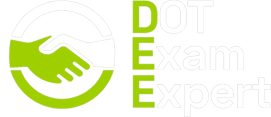
Be Prepared for and Successfully Navigate an FMCSA Audit
When we hear the word “audit”, we most commonly associate it with the IRS. However, DOT audits are far from the financial scrutiny people typically fear. Instead, these audits are focused on safety, ensuring that commercial vehicle operators meet the necessary health standards. Their ultimate goal is to make sure that drivers return home to their families safely, rather than causing harm on the road.
DOT audits are part of routine checks that ensure businesses comply with the Federal Motor Carrier Safety Regulations (FMCSRs). Conducted by the Federal Motor Carrier Safety Administration (FMCSA), these audits are not always the result of issues or violations, though they can be triggered by a higher-than-usual number of incidents. The FMCSA primarily conducts these audits to confirm that businesses are adhering to the standards that keep roads safer for everyone. It’s essential to prepare your business to meet and exceed auditor expectations so you can operate smoothly and maintain compliance.
Being audit-ready requires a proactive approach. Staying organized and keeping your records meticulous is key, as auditors will look for clear documentation that proves you’re meeting all necessary requirements.
Preparing for an FMCSA Audit
Ensuring your clinic is always prepared for a Department of Transportation (DOT) audit can seem overwhelming, but with the right practices in place, you can minimize stress and be confident that you’re meeting all necessary requirements. Proper preparation is essential to ensure that your clinic runs smoothly and that your records are always ready for inspection. Here’s how you can get your clinic audit-ready:
Maintain Detailed and Accurate Records
As a certified medical examiner, your role is vital to public safety. You are responsible for ensuring that only sober and fit drivers are allowed to operate commercial vehicles. Maintaining thorough and accurate records is key to demonstrating that you are meeting your professional responsibilities.
Stay Organized: Keeping all records and forms consistently organized is crucial. You should be able to quickly pull up any necessary files and paperwork when asked by an auditor. A streamlined, organized system reflects your commitment to accuracy and helps you maintain a smooth operation.
Complete Forms at the Time of the Appointment: It’s best to fill out forms during the appointment itself rather than relying on memory. This ensures that all details are accurately recorded and nothing is forgotten. Taking the time to complete everything at the moment will help you avoid errors that could lead to compliance issues. Be sure to allocate enough time for each appointment to ensure you’re not rushed.
Fill Out Every Field: Every section of a form is there for a reason. Leaving any fields blank could leave you vulnerable to accusations of incomplete or incorrect reporting, especially in the case of an accident involving a driver you cleared. Remember: if it’s not documented, it didn’t happen in the eyes of the auditor.
Consider using DOT exam software, such as Simple Physical, to simplify this process. Electronic Health Record (EHR) systems can help ensure that all forms are filled out properly and stored securely, reducing the potential for mistakes and saving time.
Follow Best Practices
In your training as a certified medical examiner, you were taught best practices for achieving the most accurate results in your assessments.
Instill Best Practices Across Your Team: Encourage all staff members to follow the same procedures you’ve learned. Whether it’s how to handle paperwork or how to ensure accurate testing, consistency across your team is vital for maintaining high standards and preparing for audits.
Conduct Regular Mock Audits
One of the most effective ways to stay audit-ready is by periodically conducting mock audits. These simulations allow you to identify areas where improvements are needed, whether it’s in staff training, documentation, or procedures. Mock audits also help uncover potential gaps before an actual audit takes place, allowing you to address them in advance.
Evaluate and Address Results: After a mock audit, review the findings with your team. Use this opportunity to discuss any questions or discrepancies and clarify any misunderstandings. Recognizing and rewarding your team’s hard work can also motivate them to continue performing at a high level.
Course Correction for Consistent Performance
If you notice that an employee is consistently making mistakes—whether in documentation, form completion, or sample handling—it’s essential to address the issue promptly. Provide additional training and monitor progress to ensure that these mistakes do not continue. Taking a proactive approach will help protect your business and reduce the risk of issues during a real audit.
Be Prepared When the Audit Comes
DOT audits are an essential part of ensuring public safety, but they don’t have to be stressful. When you’re organized and prepared, audits become just another routine part of business. With proper preparation, you can rest assured that your clinic will be ready whenever an auditor walks through your door.
By maintaining detailed records, staying organized, following best practices, conducting mock audits, and ensuring your documentation is always up to date, you’ll be audit-ready at all times. This proactive approach not only helps you pass audits with ease but also strengthens your clinic’s operations and boosts the safety of the drivers you serve.
With these steps in place, your clinic will be fully prepared for any audit, giving you peace of mind and confidence in your ability to meet all DOT requirements.

